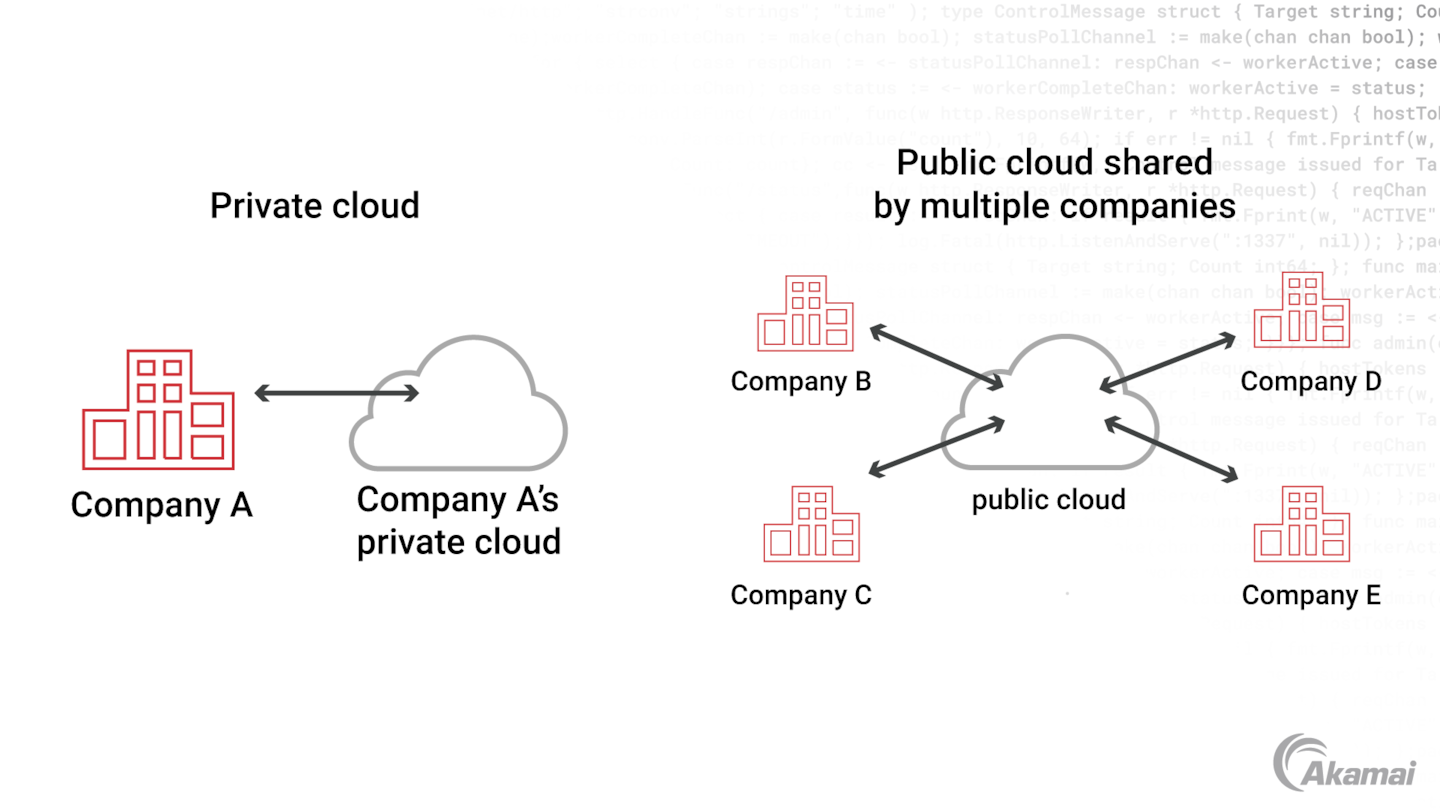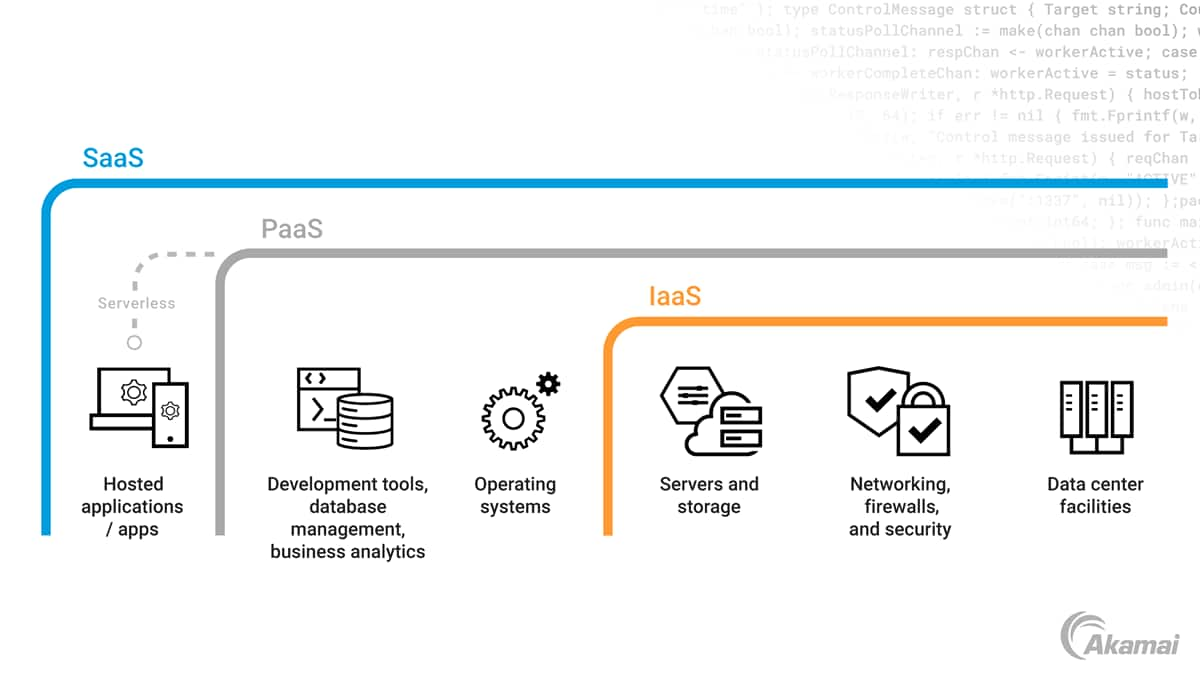Serverless computing enables software developers to build and run applications without having to manage the servers and back-end infrastructure needed to support development efforts.
An introduction to cloud infrastructure
Cloud infrastructure is the term for the hardware and software components that enable the delivery of cloud computing services. These include servers, software, networking, storage, and virtualization technology. Cloud infrastructure is deployed in remote data centers and accessed via the internet to provide on-demand computing resources for customers.
What is cloud infrastructure vs. cloud computing?
Cloud computing is enabled by cloud infrastructure. In cloud computing, businesses can access on-demand computing resources such as processing, storage, and networking over the internet, on a pay-as-you-go basis. By allowing customers to avoid buying, installing, and managing the hardware and software required to deliver these computing resources, cloud computing helps organizations reduce costs, minimize the burden on IT teams, and scale up and down far more quickly than is possible with on-site infrastructure.
How does cloud infrastructure work?
Cloud infrastructure relies on virtualization to abstract computing power and storage capabilities from the actual hardware and servers that provide it. This enables users anywhere in the world to access and utilize cloud infrastructure from their own computers. By virtualizing and then pooling vast numbers of servers and other hardware, cloud providers can offer pools of virtualized cloud infrastructure to customers, enabling near limitless scalability. Automation software and management tools allow customers to provision cloud infrastructure on a self-service basis, accessing computing resources whenever they need them.
What are the components of cloud infrastructure?
Components of cloud infrastructure include:
- Servers. The workhorse of cloud infrastructure are servers that provide processing power and execute tasks. These include servers that host cloud databases, web servers that serve commercial and noncommercial applications, mail servers that enable email to be sent via the internet, file servers that manage vast amounts of information, and other types of servers.
- Storage. Cloud storage enables businesses to store large amounts of data in remote locations, rather than needing to install and manage their own storage within on-site data centers.
- Networking. Networking infrastructure includes physical wiring, switches, load balancers, and routers that connect the other components of cloud infrastructure and make it available to customers over the internet or a private network connection.
- Virtualization. Virtualization is enabled by software called a hypervisor that allows for multiple environments to securely access the same underlying hardware in many different configurations. This effectively allows consumers to choose the compute, storage, and memory resources they need. After abstracting memory, computing power, and storage from a server, virtualization technology creates a virtualized pool of centralized resources, which is known as a cloud.
What is cloud infrastructure vs. cloud architecture?
If cloud infrastructure is the building blocks of cloud computing, cloud architecture is the way those components are combined to provide cloud computing services.
What are the different models for using cloud infrastructure?
There are three basic cloud architectures that combine cloud infrastructure in different ways.
Private clouds are cloud infrastructure that is dedicated to serving the needs of a single tenant or organization while still retaining the flexibility and speed of the cloud. The organization may own and manage the private cloud, or lease the infrastructure from a private cloud provider. While tenants in a public cloud may compete for computing resources, a private cloud enables an organization to have more control and consistency over infrastructure assets, critical applications, and sensitive data.
Public clouds are cloud infrastructure owned and operated by a third-party provider, or cloud services provider, who is responsible for provisioning, configuring, maintaining, and upgrading the infrastructure. In a public cloud, environments are partitioned and made available to more than one customer, or tenant. Virtualization enables a single physical server to provide cloud resources to multiple tenants at once. Customers access public cloud services on demand and pay only for the amount of computing services they use.
Hybrid clouds consist of a mix of public and private cloud infrastructure. This model enables organizations to choose the right cloud environment for each workload, running workloads with large bursts or spikes in demand on public clouds while reserving the private cloud for workloads with sensitive data or applications, for example. When organizations engage services from two or more public or private clouds, the result is a multicloud environment.
What are cloud infrastructure delivery models?
Cloud infrastructure is typically delivered in one of three models based on the types of resources that a business needs.
Software as a service (SaaS) provides on-demand access to applications and software over the internet, eliminating the need for businesses to buy and install software on local machines and drives. SaaS-based software is usually accessed through a web interface and can be used on a wide range of devices from any location. Because the SaaS provider is responsible for upgrading the software, SaaS technologies usually provide users with the latest and most up-to-date features.
Platform as a service (PaaS) provides on-demand access to a computing platform and solution stack that enables software development teams to build, test, and run applications or services. The customer is responsible for managing the apps running on the platform, and the data allows developers and programmers to use the latest application development and management solutions without needing to build and maintain the infrastructure used to support them.
Infrastructure as a service (IaaS) provides on-demand access to servers, networks, and storage devices over the internet on a pay-as-you-go basis. IaaS offerings enable organizations to avoid provisioning and managing their own infrastructure on site. The customer is responsible for managing the operating system, applications, and middleware.
What are the advantages of cloud infrastructure vs. on-premises infrastructure?
Cloud infrastructure offers many benefits over infrastructure that is managed in-house.
- Cost-effectiveness. By relying on cloud infrastructure, organizations can avoid the capital costs usually associated with buying and managing the hardware and software required to deliver computing resources on-premises. Rather than over-provisioning infrastructure to accommodate occasional bursts and spikes in demand, organizations can use cloud infrastructure on a pay-per-usage model, resulting in lower costs and better utilization of IT resources.
- Security. Cloud infrastructure providers leverage superior expertise and best-of-breed security solutions to provide customers with state-of-the-art cloud security. In contrast, IT teams may lack the resources, headcount, and skills required to adequately protect data and other assets within an on-premises data center.
- Reliability. The scalability and redundancy offered by cloud services delivers far greater reliability than what in-house infrastructure can provide.
- Agility. With cloud infrastructure, organizations can use self-service features to provision resources rapidly, accelerating innovation and speed to market.
What are the disadvantages of relying on cloud infrastructure?
- Less visibility and control. When using cloud infrastructure, IT teams generally have less visibility into the actual physical hardware on which their workloads are running.
- Shared security. While cloud service providers invest heavily in security, they typically operate under a shared responsibility model, where customers are responsible for protecting their workloads and data by properly configuring systems, implementing access controls, and monitoring systems. When this division of responsibility is misunderstood by IT teams, the result can be serious security gaps.
- Connectivity issues. Because cloud infrastructure is accessed via an internet connection, outages or poor internet performance can compromise the performance of processes relying on cloud infrastructure.
Frequently Asked Questions (FAQ)
A cloud-native application is a software program that is built to run in a cloud computing architecture. Cloud-native applications use microservices architecture that takes advantage of the characteristics of a cloud computing delivery model.
Cloud load balancing is the task of distributing workloads across available resources in a cloud computing environment. Load balancing optimally routes workloads to multiple servers, networks, or other resources to improve performance, reduce latency, and avoid disruption.
A content delivery network, or CDN, is a geographically distributed network of points of presence (PoPs) that can serve content faster by delivering it from locations closer to the end user. By caching content in proxy servers at different geographical locations, CDNs reduce latency and improve online experiences. A cloud CDN relies on cloud computing resources to manage and operate a CDN, rather than relying on telecommunications services.
Kubernetes is an open source system that automates the deployment, scaling, and management of containerized applications. A managed Kubernetes solution enables IT teams to outsource responsibility for some or all of the tasks related to setting up, configuring, and managing a Kubernetes implementation.
Why customers choose Akamai
Akamai powers and protects life online. Leading companies worldwide choose Akamai to build, deliver, and secure their digital experiences — helping billions of people live, work, and play every day. Akamai Connected Cloud, a massively distributed edge and cloud platform, puts apps and experiences closer to users and keeps threats farther away.



